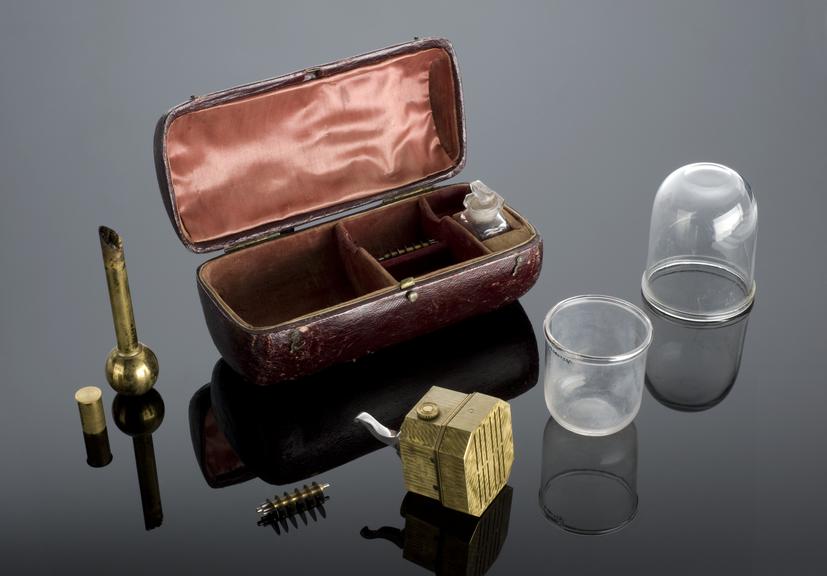


Set of cupping instruments in leather case, by Lorberg, London, 19th century
Cupping often involves bloodletting – a practice once carried out to treat a wide range of diseases and medical conditions. Heated cups were placed on the skin to draw the blood to the surface. Dry cupping was a process of stimulating the skin through suction but one where the skin remains unbroken. Wet cupping was when the skin was then cut – usually by a scarificator – to remove blood.
This set would have been used for both dry and wet cupping. It contains a scarificator with room for twelve blades, a number of spare blades, two cupping glasses and a spirit lamp, which would have heated alcohol or liquid fuel to warm the cups. The leather case is embossed with the name “T. Keen” who may well have been the original owner.
Details
- Category:
- Therapeutics
- Collection:
- Sir Henry Wellcome's Museum Collection
- Object Number:
- A606733
- Measurements:
-
overall (case closed): 90 mm x 180 mm x 88 mm, .7744 kg
- type:
- cupping set




